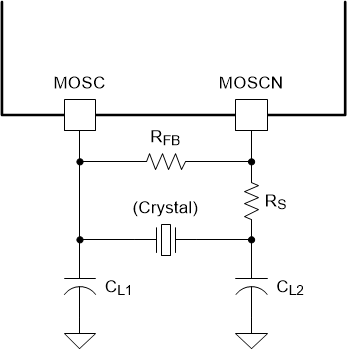DLPS029F April 2013 – May 2019 DLPC350
PRODUCTION DATA.
- 1 Features
- 2 Applications
- 3 Description
- 4 Revision History
- 5 Pin Configuration and Functions
-
6 Specifications
- 6.1 Absolute Maximum Ratings
- 6.2 ESD Ratings
- 6.3 Recommended Operating Conditions
- 6.4 Thermal Information
- 6.5 I/O Electrical Characteristics
- 6.6 I2C0 and I2C1 Interface Timing Requirements
- 6.7 Port 1 Input Pixel Interface Timing Requirements
- 6.8 Port 2 Input Pixel Interface (FPD-Link Compatible LVDS Input) Timing Requirements
- 6.9 System Oscillator Timing Requirements
- 6.10 Reset Timing Requirements
- 6.11 Video Timing Input Blanking Specification
- 6.12 Programmable Output Clocks Switching Characteristics
- 6.13 DMD Interface Switching Characteristics
- 6.14 JTAG Interface: I/O Boundary Scan Application Switching Characteristics
- 7 Parameter Measurement Information
- 8 Detailed Description
- 9 Application and Implementation
- 10Power Supply Recommendations
-
11Layout
- 11.1 Layout Guidelines
- 11.2 Layout Example
- 12Device and Documentation Support
- 13Mechanical, Packaging, and Orderable Information
Package Options
Mechanical Data (Package|Pins)
- ZFF|419
Thermal pad, mechanical data (Package|Pins)
11.2.2 Recommended DLPC350 MOSC Crystal Oscillator Configuration
The DLPC350 controller requires an external reference clock to feed its internal PLL. This reference may be supplied via a crystal or oscillator. The DLPC350 controller accepts a reference clock of 32 MHz with a maximum frequency variation of 100 ppm (including aging, temperature, and trim component variation). When a crystal is used, several discrete components are also required, as shown in Figure 26.

Table 27. Crystal Port Electrical Characteristics
| PARAMETER | NOM | UNIT |
|---|---|---|
| MOSC to GND capacitance | 3.9 | pF |
| MOSCN to GND capacitance | 3.8 | pF |
Table 28. Recommended Crystal Configuration
| PARAMETER | RECOMMENDED | UNIT |
|---|---|---|
| Crystal circuit configuration | Parallel resonant | |
| Crystal type | Fundamental (first harmonic) | |
| Crystal nominal frequency | 32 | MHz |
| Crystal frequency tolerance (including accuracy, temperature, aging and trim sensitivity) | ±100 | PPM |
| Crystal equivalent series resistance (ESR) | 50 maximum | Ω |
| Crystal load | 10 | pF |
| Crystal shunt load | 7 maximum | pF |
| Crystal frequency temperature stability | ±30 | PPM |
| RS drive resistor (nominal) | 100 | Ω |
| RFB feedback resistor (nominal) | 1 | MΩ |
| CL1 external crystal load capacitor (MOSC) | Typical drive level with TCX9C3207001 crystal
(ESRmax = 30 Ω) = 160 µW. See Figure 26 |
pF |
| CL2 external crystal load capacitor (MOSCN) | Typical drive level with TCX9C3207001 crystal
(ESRmax = 30 Ω) = 160 µW. See Figure 26 |
pF |
| PCB layout | A ground isolation ring around the crystal |
If an external oscillator is used, then the oscillator output must drive the MOSC pin on the DLPC350 controller, and the MOSCN pin should be left unconnected. Note that the DLPC350 controller can only accept a triangular waveform.
Similar to the crystal option, the oscillator input frequency is limited to 32 MHz.
It is assumed that the external crystal or oscillator stabilizes within 50 ms after stable power is applied.